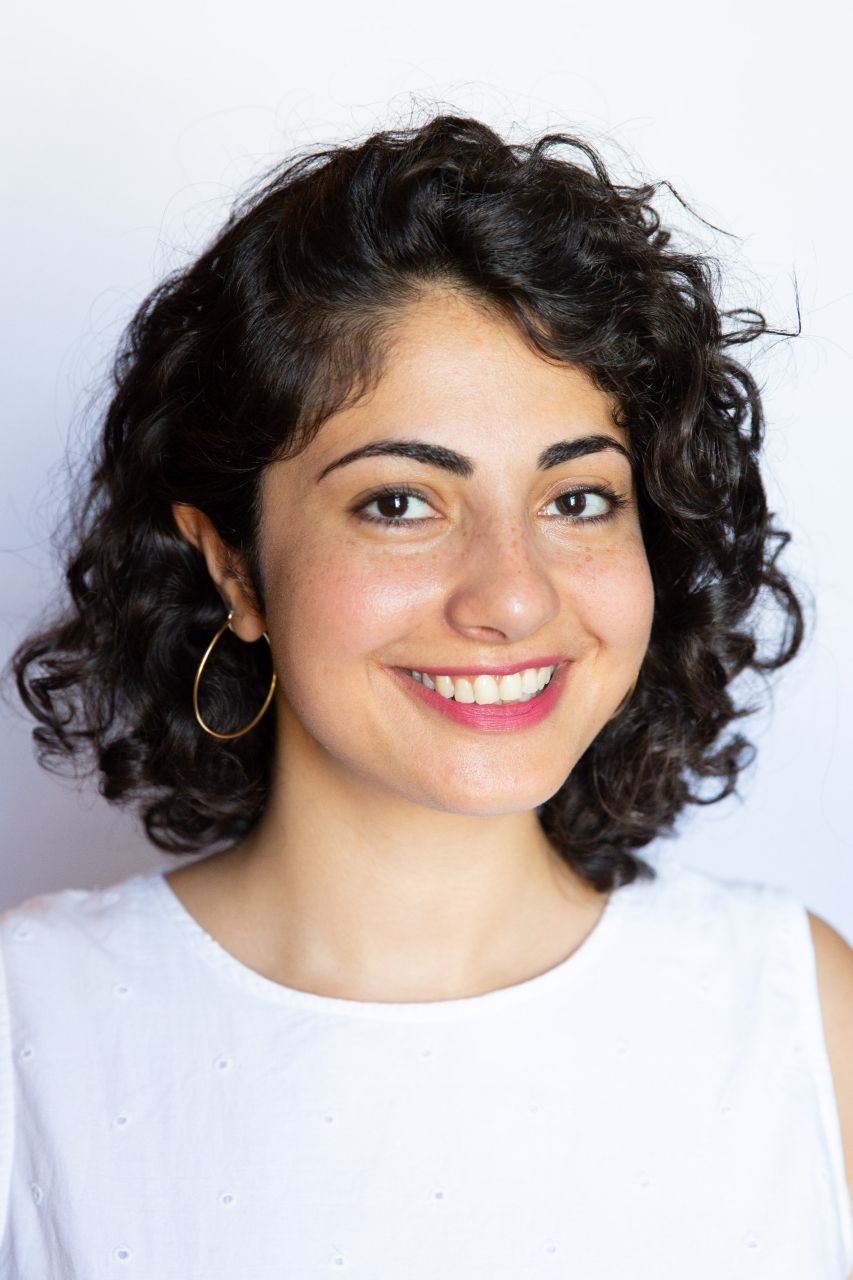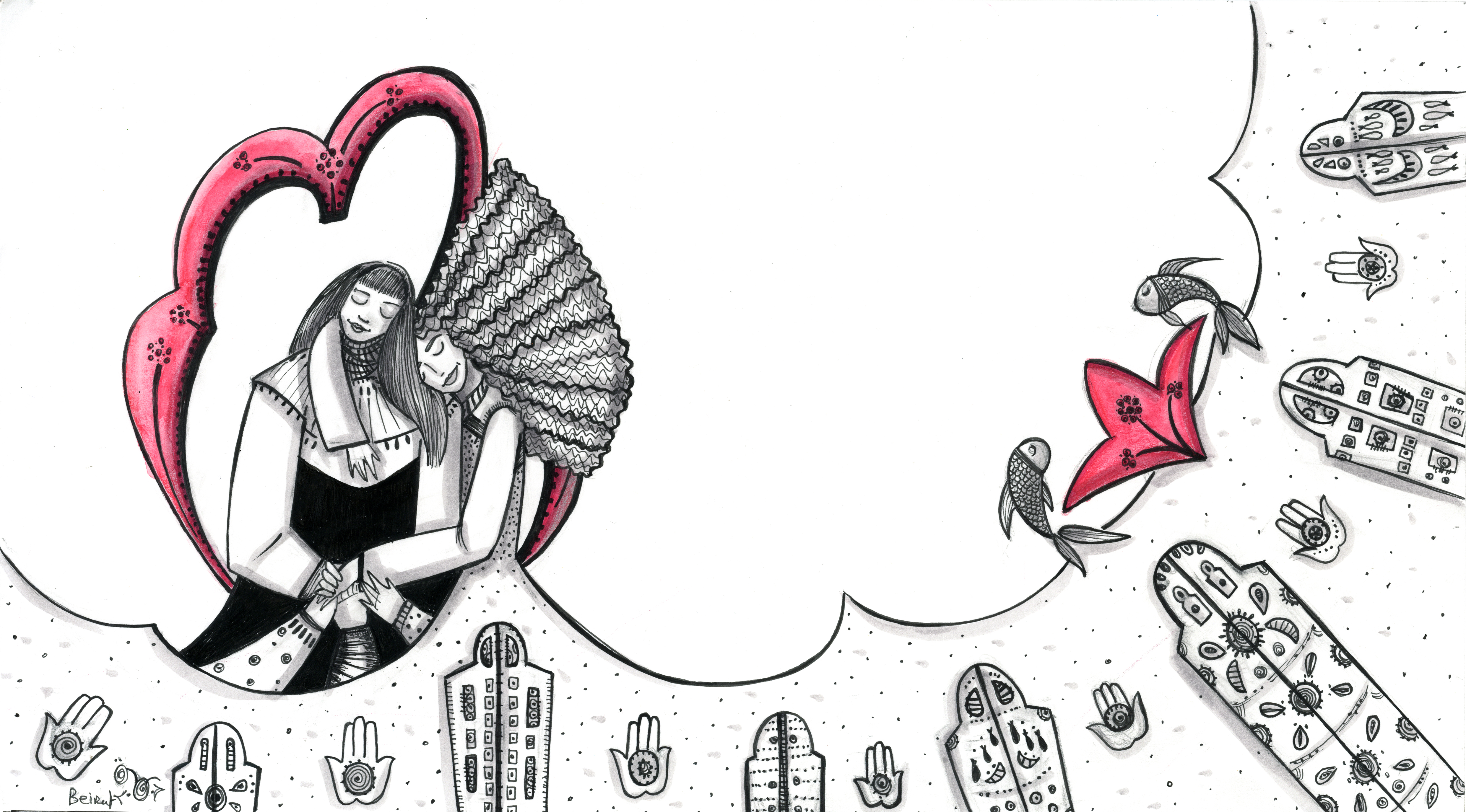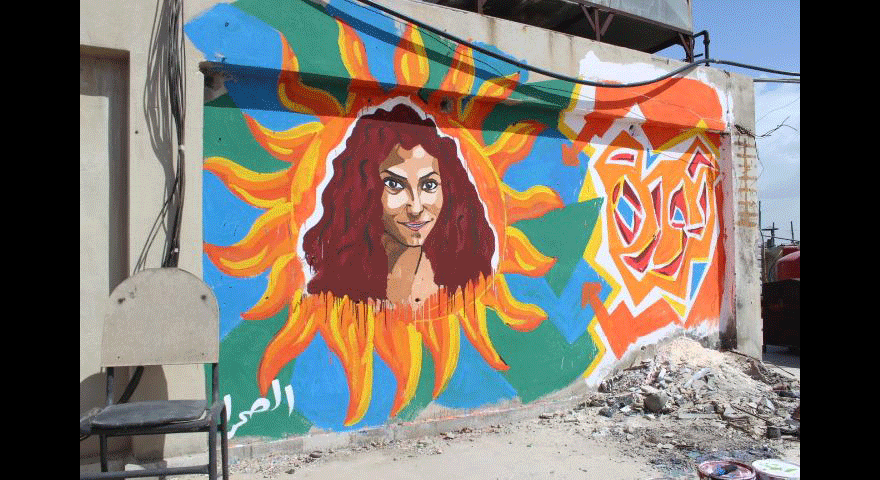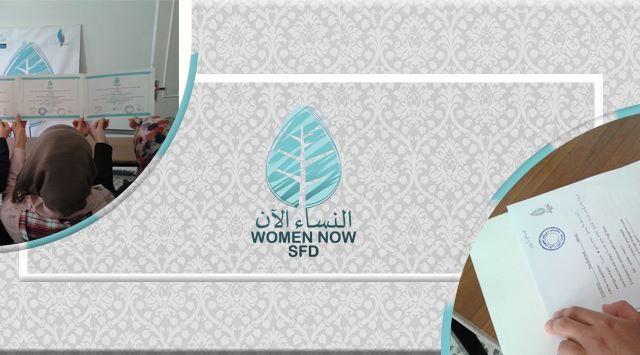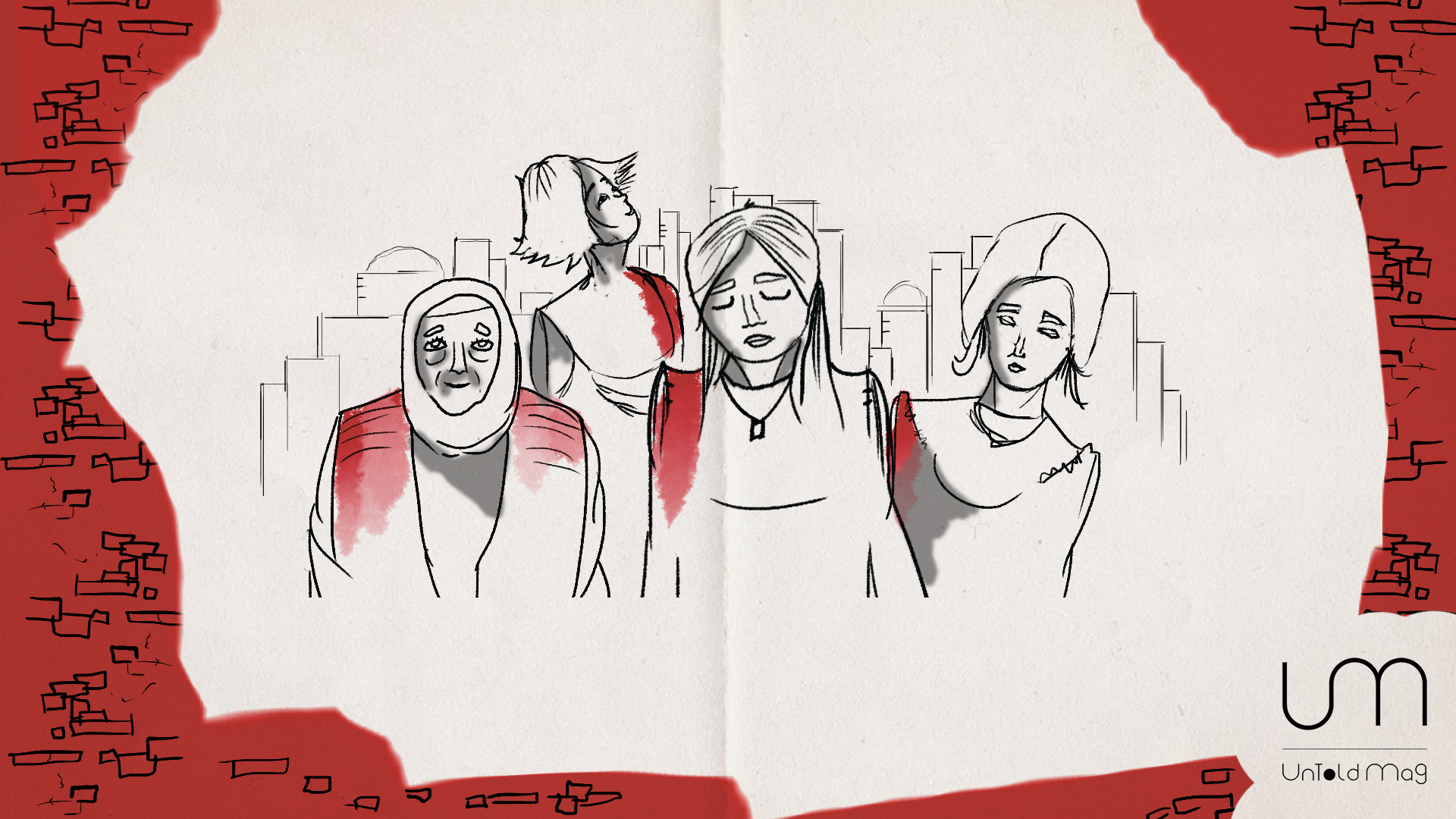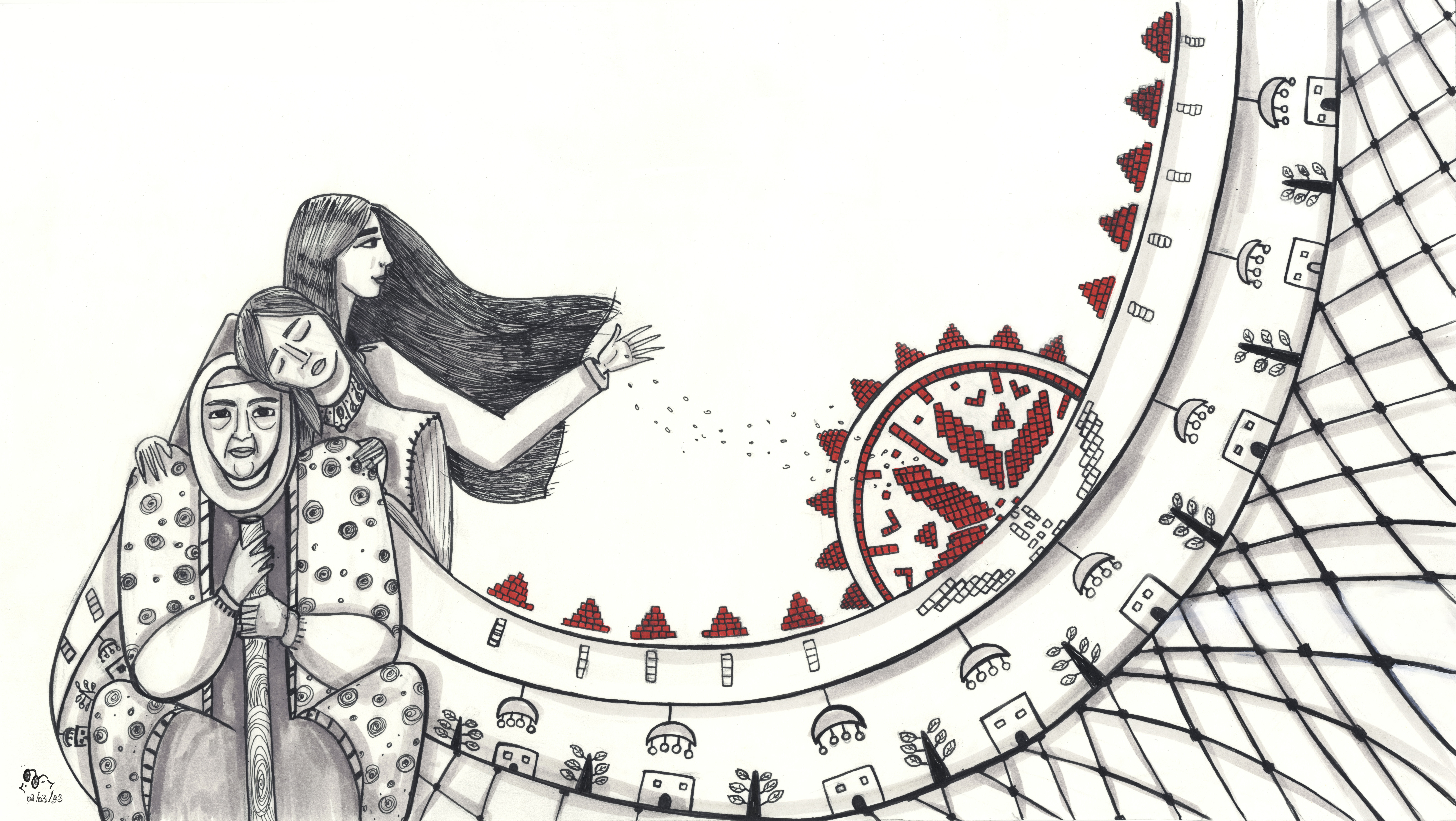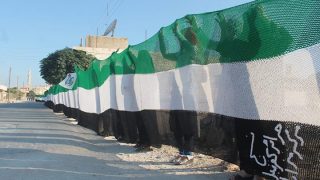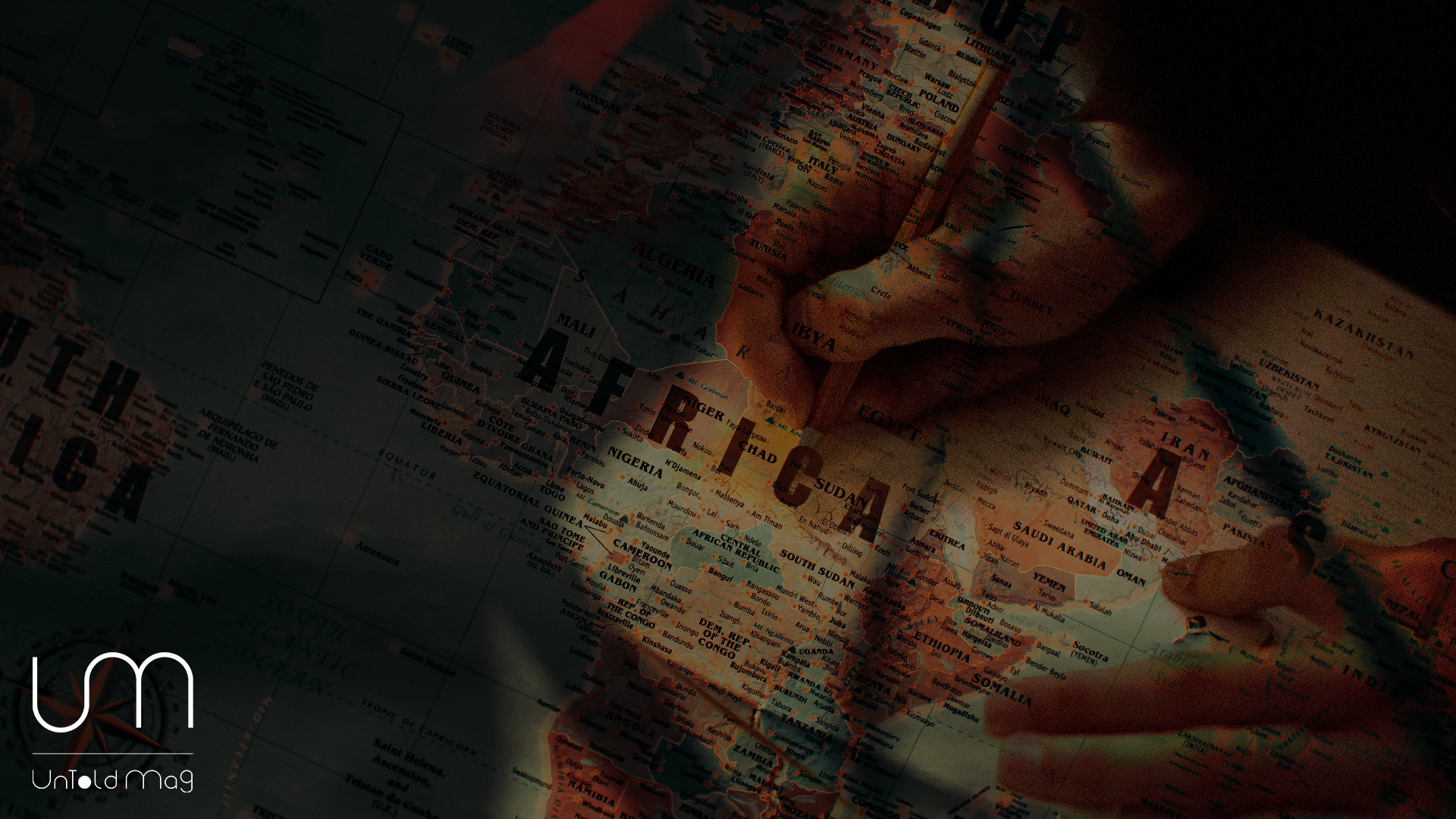The protests that we observe as Jina's Revolution or the "Jin, Jiyan, Azadi"-Revolution in Iran have been taking place since September 2022. Following the state femicide of Kurdish-Iranian woman Jina Amini by the hijab police in Iran, rage at the Islamic Republic's misogynistic rule spread throughout the country. At Jina's funeral in the Kurdish city of Saqqez, attending women took off their headscarves to protest the mandatory hijab in Iran and chanted Jin, Jiyan Azadi - Women, Life, Freedom. A slogan that has its roots in the transnational Kurdish feminist movement and has spread throughout the country. Afterwards, the streets of Iran in the most marginalized corners of the country as well as in Tehran and other big cities were filled with people, expressing their anger and rejection of the Islamic Republic in various forms.
I talked about the current revolution in Iran with the Jiyan group. The Jiyan Group is a feminist group that emerged from the political and social activities of a number of activists in Iran after the Women-Life-Freedom-Revolution.
Where do you position the months since the start of the 2022 Revolution in relation to the feminist movement in Iran since the Islamic Revolution 1979? Do you see continuities or rather a break?
Feminism saved my life، And it could save others
04 May 2023
Of course, in these years women have continually entrusted to each other the legacy of resistance. So, what has sprouted today is the result of years of struggle. But the current uprising has characteristics that allow us to speak of a new chapter in the feminist movement. The most important distinction is the link between the women's question and the entire liberation struggle of the people in Iran. Analyzing the Jina uprising only in the context of the feminist movement is misleading. The last decade was a turning point in which almost all progressive social forces distanced themselves from demand-based politics. The protests of January 2018 and the subsequent ones of November 2019, which had a spontaneous character, also pushed social activists in that direction. During these years, although there were activities in the women's sector mostly in small groups and less publicly, feminist activists were not at the forefront of the struggle. Workers, teachers, and students were those who played a prominent role during the last years. Gender was an issue that was not yet addressed as it should have been. Although in this period the resistance of women called "daughters of the Revolution Street" played an important and inspiring role in shaping the figure of the female fighter who says "No" to compulsory hijab also for the Jina uprising. If we use the "One Million Signatures Action to change Discriminatory Laws" in the years between 2006 and 2009 as a benchmark and one of the important organizational efforts of women after the 1979 revolution, the Jina movement shows a clear difference in the degree of expansion and spontaneity and can be called a discontinuity in terms of rejecting the dual political-social framework, and overcoming the centrality of addressing the state. But looking at the developments of the last ten years, we see a continuous path that has brought us to the present point.
Would you say that we are witnessing a feminist revolution here? Why?
The Jina uprising followed a series of protests in the last years, but this time the feminist struggles and the struggles of national, ethnic and religious minorities are of greater centrality than the economic question. Moreover, women have become the most important activists of the revolution. The pioneering work of women strengthens the legitimacy of their demands in today's struggle and for tomorrow's freedom, just as the resistance in Kurdistan and Balochistan made it hard for centrist nationalists to conquer the revolution. All these factors have taken us a few steps forward on the path of liberation. But a feminist revolution? The fragility of feminist ideology and organization makes the movement very vulnerable to patriarchal hegemony. If we see the glass half full, we can say that the slogan "man, homeland, development” could not succeed as much as the slogan "women, life freedom". However, there were many people who evaluated these two slogans as complementary. In any case, the progressive forces are not the only players on the field when it comes to overthrowing the current government; the patriarchal nationalist right is equipped with powerful media tools whose only antidote is to organize the oppressed.
To what extent is the fight against mandatory hijab related to other feminist demands?
Mandatory hijab cannot be separated from other aspects of gender oppression. Population policies, informalization of female care work, sexualized violence, impoverishment of women, etc. are elements that have an organic connection to each other and together create capitalist patriarchy. In the struggle for liberation, one should always keep the big picture in mind. In this way it is possible to prevent the appropriation of our demands by reactionary forces. The problematic basic assumption that also seems to lie at the heart of this question is that the women's question consists of a series of demands. This assumption leads to a conflict of priorities, which was one of the reasons why compulsory hijab was not a top priority for part of the women's movement. This approach that focuses on legal demands has taken different forms at different periods. In the period when reformist tendencies were dominating the space of social activities, one of the criteria for highlighting the demands was that they were negotiable. Of course, the compulsory hijab, which was the red line of sovereignty, did not fit into such criteria. Another trend in the women's movement, especially in the later years when the logic of "negotiation" became less important, was what one can name as "urgent needs”. This meant that one should focus on those demands that are most necessary for women's survival, such as violence or equal pay. This approach left us defenseless against the wave of imperialist feminism that has been highlighted in recent years. At some point, this trend was able to separate the mandatory hijab from the women's issue as a whole and seize it for its own benefit. Our defensive reaction (some leftist feminists) gave even more ground to this trend. But the agency of women and other subaltern people have shaped history in other ways. In Jina's uprising through the slogan "Women, Life, Freedom" the hijab has become a bridge between gender and national oppression and the demand for democracy and equality.
Although the liberal view of the hijab question, which reduces it to individual rights and freedoms, remains strong, the Jina uprising has taught us that the control of the veil is so connected to the nature of the modern state in Iran that the struggle against compulsory hijab has the capacity to shake the pillars of the existing order. In order to understand the position of obligatory hijab, it must first be detached from a tradition/culture understanding and captured as one of the capabilities of the modern state. The government seals its control over all aspects of women's and generally people's lives through compulsory hijab. Mandatory hijab is a license for the state and a gateway. It is enforced in different areas with different strategies: at the level of the family, the street, the workplace, authority offices, the university, etc. In each of these areas, the hijab and its specific dress code are prescribed, thus establishing it as a norm. The mandatory hijab is a policy of subordination for women in public spaces, and this assimilation is carried out in the street (the most public among the public spaces) under the supervision and direct intervention of the police. It was this direct encounter on the street that ignited the confrontation between the people and the government in the recent uprising. In light of this, this movement has the ability to leave behind the approach of negotiating with the state (even towards the future government). But there is still a long way towards discarding the idea of "good government" and replacing it with the idea of "self-governance".
Many talk about the fact that we are experiencing an intersectional revolution. Do you agree with that? How do you see the relationship between the different struggles?
Jina’s uprising is undoubtedly one against intersectional oppression; its initial spark and driving force are intertwined oppressions. Apart from Jina’s own position (a Kurdish Sunni woman who is a "stranger" in Tehran), what made this movement so radical and revolutionary was the raising of the voice of the voiceless, the marginalized, and the oppressed: women, queers, people with disabilities, students, oppressed nations and peoples, (precarious) workers, the unemployed, religious minorities, etc. The extensiveness and scale of the uprising indicate its inclusiveness. One of the characteristics of this uprising is that marginalized identity has become a public issue on a large scale, the motivation of the struggle and the content of slogans. Suddenly, those who have been buried alive for years are rising from their graves and chanting the slogan of life. It has become clear that the government's efforts to silence, depoliticize and marginalize whole sections of the society have been unsuccessful. As unprecedented student movements came to life outside the center and in a wide perimeter, those universities kept the fire of protest burning, which were assumed to have turned into hollow institutions by the state’s marginalization policies. Apart from that, a large number of precarious workers and unemployed people form the main part of this movement (as they did in the 2018 and 2019 uprisings).
It should be noted, however, that no matter how widespread the movement, the intersectional approach requires that we always identify the absentees and the reasons for their non-participation. For example, unlike in November 2018, Arab people are playing a smaller role in the Jina Uprising. It is crucial to find the reasons for this. Additionally, other national minorities such as the Turkmen did not have an organized presence in the recent uprisings, or if they did, they were not widely represented in the media. Apart from this, the working class as an organized body has also a weak presence. If we don’t find an answer for these shortcomings, we cannot develop truly liberating strategies. Each oppressed group has a particular position, a distinct voice and different demands. For no one is free, until we all are free.
Today, the intersectional uprising and the empathy and solidarity among oppressed groups have shocked reactionary forces on both fronts, Islamists as well as nationalists. That's why the Islamic Republic, on the one hand, has engaged in multi-layered repression as usual (war shells in Kurdistan and Balochistan, shotguns in Tehran and other central cities). Nationalists on the other hand are trying to appropriate the oppressed ones’ uprising and silence their cry of rage by mobilizing counter-revolutionary forces (with financial and media support).
We know that the slogan Jin Jiyan Azadi originates from the Kurdish feminist movement and has spread everywhere in the country in the first days of the revolution. Where do you see the further connections between this revolution and the feminist movements in the region (Middle East)?
In this regard, the issue cannot be viewed solely through the gender lens. What has provided the reason for the slogan "Women, Life, Freedom" in Iran was the multi-layered identity of the Rojhelat people, who could bridge Iran and Kurdistan. The national minorities living in Iran each offer windows that can lead us to another world of culture and struggle, windows that the centralist state of Iran will refuse to open until the end of its rule. In any case, our mission as feminists is to break the fortresses that our states have built. These walls exist in the minds of many of us. A brief look at feminist works that have been translated in Iran shows that our gaze in recent years has been mainly (not exclusively) focused on history and feminist theory in the West, in a way that has often prevented us from making our region the unit of analysis. This, of course, is also one of the characteristics of centralist feminism, which can abstract its position in such a way that it identifies rather with the struggle of women in the West than with those of the region. An analysis of the impact of Jina’s uprising in the region requires a connection that we lack. Of course, we have heard the messages of solidarity from our sisters in the countries of the region, especially from our sisters in Afghanistan who, like us, have been wounded by fundamentalism. Despite the large number of female immigrant women in Iran, even though Iranian feminist activists address the problem of immigrant oppression in Iran, they were not able to develop a meaningful approach to joint resistance. Yet this would be precisely a nexus that can create a strong bond between Iranian and Afghan women and queers.
Although the strong security pressure in the Islamic Republic, which is the main obstacle to international communication, should not be ignored, Iranian feminists also need to defeat the giant of Iranian nationalism. As the nationalist view causes a nonrecognition of struggles of women in the region, such as Arab women. Anti-Arabism does not only represent explicitly racist positions. Indifference to the struggles and achievements of our Arab sisters and imagining them as generally backward is also one level of Anti-Arabism. Of course, compared to the past, we have taken more steps to understand the region, and we have recognized the need for regional organization. Feminists in exile from countries in the region can also play an effective role in creating a deeper connection and have already done so. Finally, it should be added that the answers to these and earlier questions are the result of our limited experience and observations. Since intergenerational communication is interrupted due to widespread repression, and dialogue between different groups of activists and sharing of experiences is difficult, there is a possibility that we are not aware of the struggles that contradict some of the assertions of this interview.


